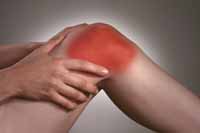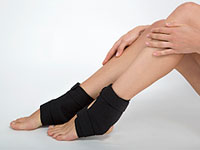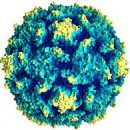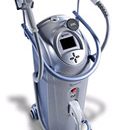How sclerodermia is manifested, causes of the disease? How to diagnose sclerodemia? Answers to the questions you will find in the article.
Content
The causes of the disease are unknown. It is believed that sclerodermia is developing under the influence of some external factors in people with certain genetic disorders. External factors capable of provoking the development of sclerodermia include retroviruses (primarily cytomegaloviruses), quartz and coal dust, organic solvents, vinyl chloride, some drugs (bleomycin and a number of other drugs used for chemotherapy).
How sclerodermia is manifested
As a systemic disease, sclerodermia is characterized by simultaneous lesions of the skin, vessels, musculoskeletal system and internal organs, including heart, lungs, kidneys and gastrointestinal tract.
The characteristic early sign of sclerodermia is Reino syndrome - transient episodes of spasms of the vessels of the leather limbs under the influence of cold or with emotional stress. Clinically Reynox Syndrome manifests itself clearly defined areas of the color of the fingers of the brushes. At the beginning of an attack of a vascular spasm, the fingers of the brushes acquire a pale color, which within a few minutes is replaced by a bluish-purple shade. After the resolution of the spasm and the restoration of blood flow comes redness of the skin and the skin becomes intensively pink. In some patients, the seizures of the vascular spasm are accompanied by a feeling of freezing with brushes, numbness or impaired sensitivity. In the phase of redness of the skin, patients may feel pain in the fingers of the brushes. Vascular spasm may also be subject to vessels of the skin of the face and other sites. In these cases, there is characteristic changes in the color of the tip of the nose, lips and ear shells, over the knees.
The most specific feature of sclerodermia is the lesion of the skin in the form of its thickening and seals, which are observed in the overwhelming majority of patients with sclerodermia. The selence and prevalence of skin seal differ in individual patients, but the skin seal with sclerodermia always begins with fingers of the brushes, and in the future it can spread further on the limbs and torso. Simultaneously with the fingers of the brushes, the leather of the face is often observed, as a result of which nasolabial and frontal folds are smoothed, the red border of the lips are thinning around which radial wrinkles appear. With long-term observation, the stage of skin lesion is marked: swelling, sealing, thinning. Skin seal has a tendency to progression in the first 3-5 years of illness. In the later dates, the skin becomes less dense and the seal remains only on the fingers of the brushes.
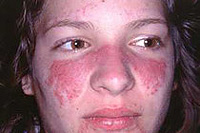 Often a sign of sclerodermia is intensive skin staining, limited or widespread, with hypo-or depigmentation sites («Salt with pepper»). The characteristic feature is ulcers on the fingers that can be sharply painful. Yazine lesions of the skin are observed in other areas subjected to mechanical influences: above the elbow and knee joints, in the field of ankles and heels. As a result of circulatory disorders, rutters on the fingers appear, point sections of skin thinning («Rat bite»). Rutters on the fingers may occur after healing of ulcers. Due to the death of hair follicles, sweat and sebaceous glands, the leather in places of seal becomes dry and crawled, hairsproke.
Often a sign of sclerodermia is intensive skin staining, limited or widespread, with hypo-or depigmentation sites («Salt with pepper»). The characteristic feature is ulcers on the fingers that can be sharply painful. Yazine lesions of the skin are observed in other areas subjected to mechanical influences: above the elbow and knee joints, in the field of ankles and heels. As a result of circulatory disorders, rutters on the fingers appear, point sections of skin thinning («Rat bite»). Rutters on the fingers may occur after healing of ulcers. Due to the death of hair follicles, sweat and sebaceous glands, the leather in places of seal becomes dry and crawled, hairsproke.
The articular pains and morning stiffness are frequent manifestation of sclerodermia, especially in the early stages of the disease.
The result of circulatory disorders is the destruction of nail phalanx, manifested by shortening and deformation of the fingers.
Muscle defeat can lead to the development of muscle weakness.
The damage to the gastrointestinal tract develops in 90% of patients with sclerodermia. The defeat of the esophagus is manifested by a violation of swallowing, a stable heartburn, which is enhanced after meals. The lesion of the stomach and duodenum is manifested by pain in the stomach, flatulence. The defeat of the small intestine more often proceeds asymptomatic, but in severe changes, the syndrome of broken intestinal suction with diarrhea, flatulence and weight loss is developing. Consequence of the lesions of the thick intestine are constipation.
Light defeat develops more than 70% of patients with sclerodermia and manifests itself with increasing breath and resistant cough.
On other common manifestations of sclerodermia include SHEGREEN syndrome (20%) and the defeat of the thyroid gland (Tireloit Hasimoto or de Kervena), leading to a reduction of the functions of the thyroid gland.
How to diagnose sclerodermia
Approximately half of the cases there is an increase in EPE more than 20 mm / h. With the same frequency, signs of inflammatory activity during sclerodermia are detected: increasing the content of fibrinogen and serumcoid; Less often there is an increase in the reactive protein indicators.
In 10–20% of patients revealed anemia, the cause of which can be a deficiency of iron and vitamin B12, kidney damage or direct bone marrow. Of great importance is the detection of autoantibodite sclerodermia.
Among the many instrumental research methods, the capillaryoscopy of the nail bed plays an important role. Microcirculation research methods, such as laser-doppler-floosterry, parasismography and others, are of secondary importance in the diagnosis of sclerodermia due to the significant variability of the results.



